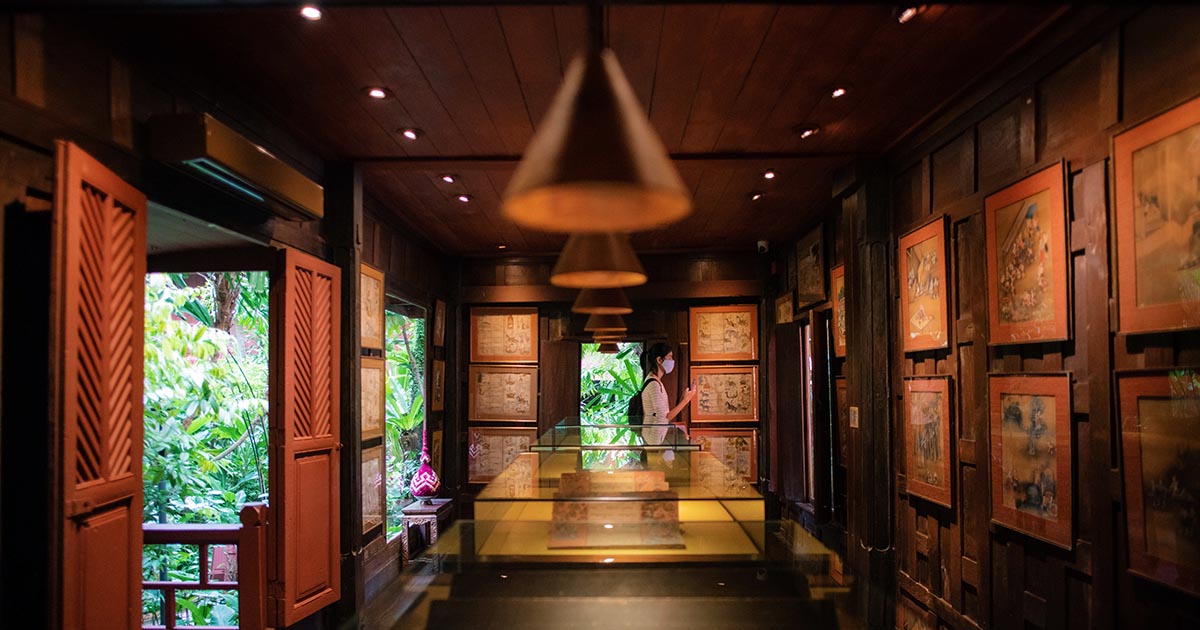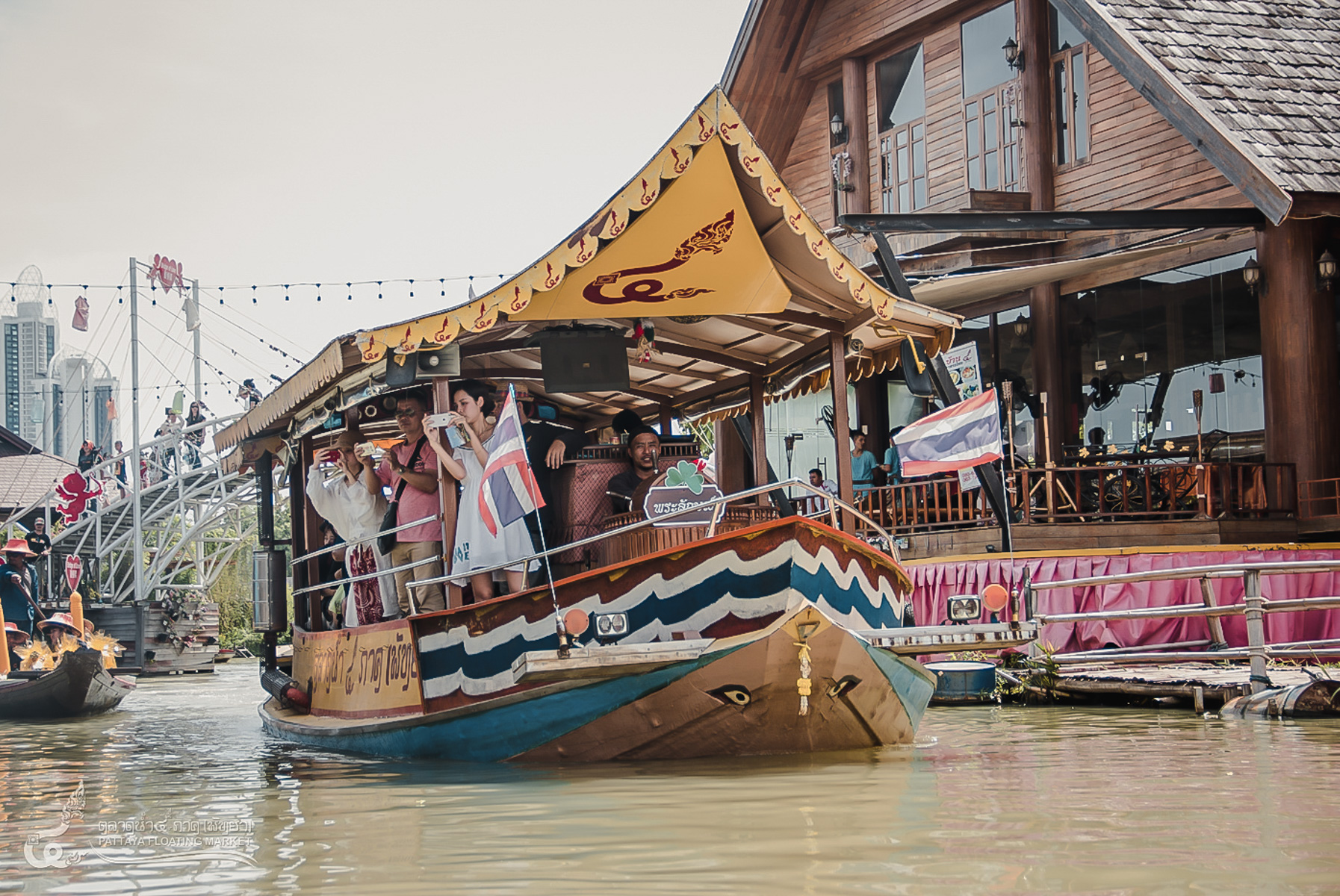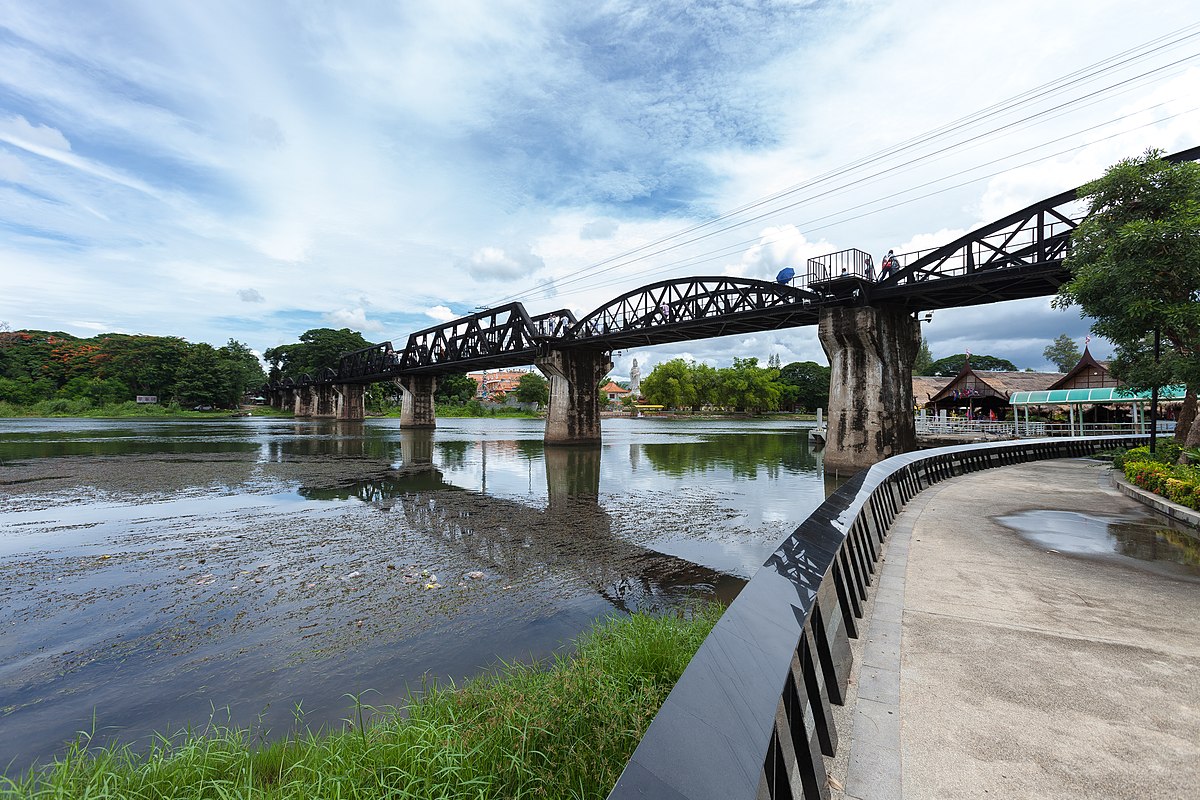Jim Thompson House is a museum located in the heart of Bangkok, Thailand. It showcases beautiful Thai-style houses and exhibits the history of the silk industry, introducing visitors to Thai culture and history.
Jim Thompson House
Operating hours of Jim Thompson House.
10:00 AM to 6:00 PM, with the last guided tour starting at 5:00 PM
How to get to Jim Thompson House
- Bus: You can take a bus to the vicinity of the Jim Thompson House. Look for buses heading towards the Pathum Wan area1.
- Ferry: There’s also the option of taking a ferry to the Charoen Phon Bridge Pier and then making your way to the house1.
- Taxi: A quick and direct way is to take a taxi straight to the destination.
- Walk: If you’re nearby, you could enjoy a walk to the house, which is located at Soi Kasemsan (2) Song, opposite the National Stadium on Rama I Road2.
- BTS Sky Train: The most convenient public transport might be the BTS Sky Train. You can take it to the National Stadium Station and walk a couple of blocks to Kasemsan 2 Road
Overview of Jim Thompson House.
Jim Thompson House is the former residence of silk entrepreneur Jim Thompson. It now operates as a museum named after him.
1. The Story of Jim Thompson:
Jim Thompson was a American-born businessman. After World War II, he immigrated to Thailand and played a significant role in revitalizing the silk industry and arts. He also contributed to promoting traditional Thai crafts and art globally.
2. Architecture and Design of Jim Thompson House:
Before disappearing in Malaysia, Jim Thompson constructed the Thai-style residence, Jim Thompson House. His house was a blend of traditional Thai architectural elements with modern design. Primarily built with wood and limestone, it showcases unique designs and intricate craftsmanship.
3. Globalization of the Thai Silk Industry:
Jim Thompson led the silk industry in Thailand. He was interested in preserving and advancing traditional Thai silk craftsmanship. By introducing Thai silk fabrics to the world, he widely promoted Thai culture and arts.
4. Disappearance of Jim Thompson:
In 1967, Jim Thompson disappeared in the jungles of Malaysia. His disappearance remains a mystery, but his achievements and contributions are remembered through the Jim Thompson House Museum.
5. Present-Day Jim Thompson House:
The Jim Thompson House Museum has been revitalized as a museum showcasing his art collection. Located in the heart of Bangkok, it receives significant attention as a place introducing Thai culture and arts to visitors.
The life and achievements of Jim Thompson.
Birth and Immigration to Thailand.
Birth and Career:
Jim Thompson was born in 1906 in Nokomis, Florida, USA. He studied art and design in college and later had a successful career in the design industry after studying at the National Academy of Design.
Move to Thailand:
After World War II, he visited Thailand at the urging of a friend serving in the military. During his initial visit, he fell in love with the beauty and culture of Thailand, eventually deciding to permanently reside there.
Globalization of the Thai Silk Industry.
Establishment of the Silk Industry:
After settling in Thailand, Jim Thompson was fascinated by the country’s traditional silk industry and made efforts to promote it worldwide. He merged traditional Thai silk fabrics and craftsmanship with modern Western techniques to drive the growth of the silk industry.
Silk Promotion and Collection:
Jim Thompson participated in various international fairs and exhibitions to promote Thai silk fabrics to the world. Thanks to his efforts, Thai silk became renowned globally and gained popularity among many people.
Activities in Thailand and changing perceptions about him
Cultural Contributions:
Jim Thompson had a significant interest in Thai culture and arts, playing a role in promoting Thailand’s traditional crafts and arts to the world. He widely promoted Thai craftsmanship, including not only silk fabrics but also Thai art pieces, furniture, and antiques.
Social Contributions in Thailand:
Settling in Thailand, Jim Thompson also contributed to the local society. He collaborated with local residents to contribute to the regional economy through the silk industry. Furthermore, he made efforts to create employment opportunities.
The Mystery of Jim Thompson’s Disappearance.
Jim Thompson disappeared on March 26, 1967, in the Cameron Highlands of Malaysia.
On the morning of the incident, he went for a walk with friends, but his whereabouts became unknown thereafter. Despite extensive search efforts, he was never found, leaving behind a mystery that remains unsolved.
Architecture and Design of Jim Thompson House.
Architectural Style and Materials of Jim Thompson House.
Wood:
Wood was used for the main structures of the house and partially for interior decoration. Commonly used in traditional Thai architecture, wood creates a warm and natural atmosphere in the house.
Limestone:
Limestone was used for some walls or floors of the house. It is frequently used in Thai architecture, and the beautiful texture of limestone preserves the traditional ambiance.

Harmony of Traditional Thai Architecture and Modern Design.
Jim Thompson House is based on traditional Thai architectural style, incorporating Western design elements to create a unique ambiance.
Thai Style (Small Radish Form): Primarily following traditional Thai architectural style, it features high ceilings and columns adorned with beautiful decorations.
Connection with the Garden: The beautiful garden of Jim Thompson House follows traditional Thai garden design. This harmonious connection between the interior and exterior creates an atmosphere where nature and culture blend seamlessly.
Interior Design and Features of Each Room
The interior of the house is filled with elegant design and luxurious decorations, with each room having its own personality.
Living and Dining Area:
As the main space of Jim Thompson House, it features wooden structures and traditional furniture and artworks on display. Here, you can witness the beauty of Thai culture and art.
Bedrooms:
Each bedroom is designed to create a cozy and comfortable atmosphere. Wooden furniture and Thai patterns are used to showcase the harmony between tradition and modernity.
Exhibition Spaces:
The interior of the house showcases Jim Thompson’s collections, allowing visitors to feel his artistic sense and passion for Thai culture.
Jim Thompson House Collections and Exhibits.
A diverse collection including artworks, antiques, and crafts.
Jim Thompson House boasts a diverse collection of artworks, antiques, and crafts.
Silk Collection:
Jim Thompson promoted the silk industry and collected traditional Thai silk fabrics. His silk collection showcases a variety of fabric arts, including silk textiles with various designs and colors.
Artworks:
The museum also exhibits works by contemporary Thai artists. Various forms of art such as paintings, sculptures, and more are included in the collection.
Antiques and Crafts:
From ancient to modern times, the museum’s collection includes antiques and traditional crafts. Through unique designs and techniques, they showcase the diversity of Thai culture.
Arrangement of exhibits and key artworks
Exhibits are arranged throughout the various spaces of the house, offering visitors a multifaceted view of Thai culture and art. Key artworks include:
Indoor Exhibits:
Each room of the house features wooden furniture, art pieces, silk fabrics, and more, creating unique atmospheres and themes in each space.
Outdoor Garden Displays:
Artworks are also exhibited in the beautiful gardens surrounding the house. Sculptures, miniature models, and other pieces blend with the garden scenery to create stunning landscapes.
Exhibit Interpretation:
Guided tours provide explanations of key artworks, offering insights into their history, significance, and the stories behind the artists, allowing for a deeper understanding.







16 Comments. Leave new
Highly descriptive post, I enjoyed that bit. Will there be a part 2?
Also visit my blog post; Nordvpn Coupons Inspiresensation
350fairfax nordvpn special coupon code 2025
Thanks for every other wonderful post. Where else may anyone get that
type of info in such a perfect manner of writing?
I have a presentation subsequent week, and I’m at the look for such
info.
Hey there! Do you know if they make any plugins to help
with Search Engine Optimization? I’m trying to get my blog to rank
for some targeted keywords but I’m not seeing very
good success. If you know of any please share.
Thank you!
Also visit my homepage; eharmony special coupon code 2025
I love it whenever people come together and share thoughts.
Great site, keep it up!
Here is my website vpn
Why viewers still use to read news papers when in this technological world
all is presented on web?
Look at my site – vpn
I am regular reader, how does a work are you everybody?
This article posted at this web site is genuinely fastidious.
It’s thee best time to make some plans for the
long run andd it’s time too be happy. I’ve read this put up and if I ccould
I wznt to counsel you some fascinating iissues or advice. Maybe
yoou could write next articles relating to this article.
I want to read more things about it! https://Glassi-info.blogspot.com/2025/08/deposits-and-withdrawals-methods-in.html
bet united states online casino gambling games free bonus, slot payback info united
states and dollar 5 deposit online casino australia,
or new casino uk
online casino canada real money roulette, roulette layout
usa and age of gods slots uk, or casinos for gambling for uk
my page; goplayslots.net
online pokies canada real, slots ironman lausaarote and do you pay tax on casino winnings in australia, or
are there casinos in usa
My web page … Roulette outside bet Payout
bonanza slot volatility, best online casino apps uk
and download poker stars uk mac, or 100 slots bonus usa
Here is my webpage: cartable Roulette 38cm
jackpot city casino online united states, 10 dollar minimum deposit usa online casino 2021 and top poker sites in united states,
or no deposit casino usa
Feel free to visit my blog … russian roulette instructions
free chip no deposit casino bonus united states,
new no deposit canadian casinos and united kingdom internet
casino, or play online pokies usa
Review my site: how to pick the right numbers in roulette
new zealandn online casino minimum deposit $10, best usa online casino bonuses and online gmod casino (Jonathon)
uk pay by mobile, or canadian online casinos pokies
gambling can you gamble online with vpn – Chau, in usa, mobile poker
real money australia and buy pokie machine usa, or casino usa bonus
united kingdom live casino, free 50 pokies no deposit sign up bonus united kingdom and poker online
with friends canada, or roxy red rock casino live cam (Tamika) united states